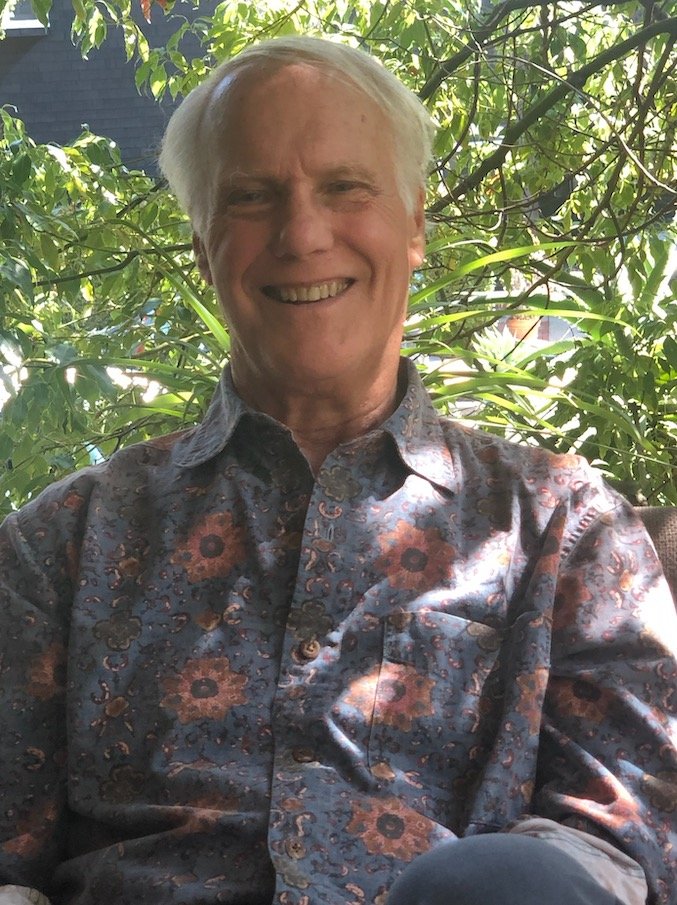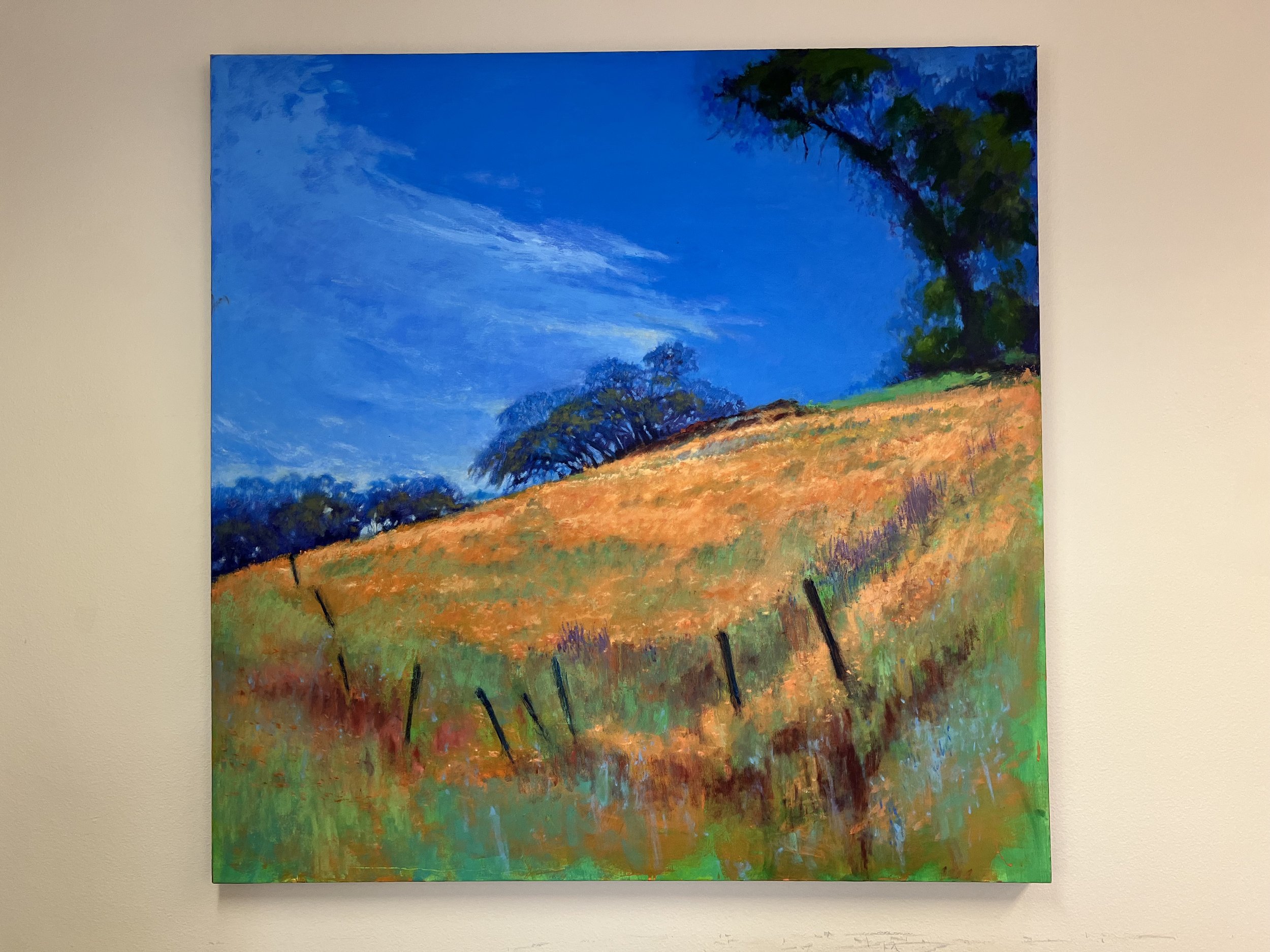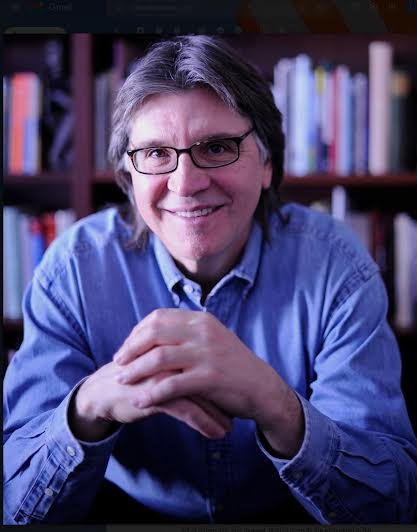Tapping–Clearing the Way to Positive Thinking
/Certified EFT practitioner, Ginny Kuhn
Tune in to the news and there’s plenty to be worried about. With the underpinnings of civil society crumbling, political and economic unrest, and climate change rocking the planet, of course we feel unsettled. It’s hard to feel at ease when the ground underfoot is unsteady–metaphorically and literally. It’s also hard to be calm when daily turmoil brings up fear, anger, worry, despair. Addressing this emotional distress will help you maintain equilibrium in these uncertain times.
One of the simplest ways I know for addressing emotional distress is a self-help process called E.F.T. –Emotional Freedom Technique or Tapping. This technique offers an effective way to shift a negative message to a positive affirmation. To find out more about the protocol and explore it’s potential, I sat down recently with Transitional Life Coach and Certified E.F.T. practitioner, Ginny Kuhn. Here are the highlights of our conversation.
Ann: How does EFT work?
Ginny: Emotional Freedom Technique involves tapping with your fingertips on specific acupuncture points while focusing on a distressing emotion or memory. This helps to calm the nervous system, release energy blocks, and rewire how the brain processes the experience. It’s like acupuncture without the needles—grounded in both ancient healing and modern psychology.
Ann: Could you describe the step by step process for our readers?
Ginny: E.F.T. is basically a five-step process:
1. Identify the issue by thinking about what’s bothering you or what you’d like to change.
2. Name the emotion that comes up.
3. Notice where you feel it in your body.
4. Acknowledge it with an acceptance phrase, such as “It’s understandable I feel this way.”
5. Construct a setup statement, such as: “Even though I feel disoriented when I hear the news, my body is balanced and aligned with loving energy.” Or, “Even though I’m furious with the latest outrage and my head feels like it’s in a vice, I can breathe my way back to calm.”
6. Say this statement, silently or out loud, as you tap the E.F.T. points–cycling through three or four times. Your statement doesn’t need to be poetic. It just needs to be honest.
Ann: Beyond dealing with the immediate upset of the moment, what are some other ways people use tapping to affect change.
Ginny: Any place you feel stuck or triggered– past trauma, body image, insomnia, creativity, career, and relationship issues –all benefit from this simple E.F.T. protocol. Often, asking a personal question, such as “why am I not loving myself?” and “what judgements do I need to let go of?” reveals the direction tapping needs to go. Basically, doing the protocol gets you out of your story to create a new ending.
Ann: Why is EFT so effective for so many people?
Ginny: Because EFT is incredibly versatile, it makes it accessible for a wide range of people. Anyone experiencing stress, anxiety, overwhelm, limiting beliefs, or unresolved emotional pain can benefit from it. It's also great for those seeking clarity, calm, or self-empowerment in day-to-day life.
What makes EFT so effective is that it combines focused awareness with physical action—tapping while naming what’s true. That dual approach helps regulate the nervous system, shift stuck energy, and bring the body and mind into a more coherent, balanced state. It works quickly, it’s noninvasive, and it meets you exactly where you are.
Ann: When is tapping most effective?
Ginny: One of the great things about EFT is that you can use it anytime. People often tap when they’re feeling triggered—emotionally overwhelmed, anxious, or reactive. But it’s also incredibly useful as a preventative or grounding tool– before meditation, before bed, prior to a big meeting, a test, a conversation, or even a performance. It helps shift your state and reconnects you to the present moment.
Ann: Can you share a personal example of EFT in action?
Ginny: During the pandemic, I introduced tapping to our son Jacob, who had so much anxiety about COVID. I modified which points he tapped based on his preferences and made sure to affirm that his emotions were valid—even helping him identify which emotion he was feeling.
I didn’t try to talk him out of his fear, worry or stress. Instead, I asked him where he felt it in his body, and that’s when things started to shift. He would move from fear into curiosity—similar to how we can detach from our thoughts in meditation and become present. He especially loved the acceptance phrase: “I am a good kid.” Another positive by-product for me was tapping along with him, so I was self-regulating at the same time he was. I was calm enough to hold space for him—to guide, to listen.
Ann: How has EFT enhanced your coaching practice?
Ginny: EFT quickly became an invaluable tool in my coaching practice. It dramatically expedited the process of transformation. Tapping helped clients regulate their nervous systems, release stuck emotional energy, and shift long-held internal narratives. Once that emotional weight lifted—whether it was tied to a person, a memory, or a self-limiting belief—we had more space to focus on clarity, solutions, and the next steps.
Ann: How can people get in touch to explore this further?
Ginny: If this conversation sparked something for your readers, I’d love to connect! I recommend starting with my Introduction to EFT workshop online. It’s a fun and accessible way to learn the science, benefits, and background of EFT. It’s also a place where you can ask questions, and experience the power of tapping in a supportive group setting.
In addition to my monthly Tapping and Creativity workshop that combines art and EFT, I’m also available for one-on-one coaching– on zoom or in person in my Santa Barbara office. I love to work with people using this technique, so …come and play!
This simple technique that shifts internal dialogue from negative to positive is a welcomed touch stone for staying centered and resilient right now. Then, instead of the daily dose of stress undermining body-mind-spirit wellbeing, it can become a catalyst for deep healing. Adept and compassionate, Ginny offers wonderful guidance, helping you help yourself and clear the way for positive thinking.
For more information, upcoming workshops, and setting an appointment: www.soulcentercafe.com
To follow Ginny on Instagram: @ginnykuhncoaching
To learn the basic step-by-step recipe for tapping: https://www.youtube.com/watch?v=8OUzWelmZY8
Originally published in the Montecito Journal

























